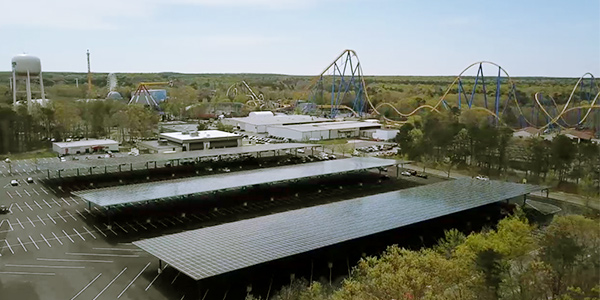By Michael Yoder
New Jersey is winding down a solar energy program that helped place the state near the top of solar production in the country.
The New Jersey Board of Public Utilities announced Monday it was directing staff to close the state’s Solar Renewable Energy Certificate (SREC) registration program effective April 30.
The Clean Energy Act of 2018 (AB-3723), which Gov. Phil Murphy signed into law in May of that year, set new clean energy standards in New Jersey, including a requirement that the BPU would close the SREC program by June 2021 or when 5.1% of the kWh sold in the state was generated by solar. The board said it expects to reach the 5.1% milestone by the end of April.
The BPU established the SREC program in 2004 to complement the state’s existing solar rebate program. Since then, state officials said more than 3.25 GW of solar systems have been constructed throughout New Jersey, including more than 118,000 residential solar systems.
“While today marks the end of one chapter, it also marks the beginning of a new chapter that I believe will lead to a very successful solar future while also lowering costs for New Jerseyans,” said BPU President Joseph L. Fiordaliso. “With a record year for solar in 2019, the New Jersey solar industry is strong, and I am confident it will continue to be healthy and profitable while playing a key role in fighting climate change and reaching the governor’s goal of 100% clean energy by 2050.”
The SREC program allowed New Jersey to become one of the leading solar energy producers in the country despite its relatively small land size and available space. According to data provided by the BPU, it’s currently ranked seventh in the nation in installed solar capacity and ninth overall in clean energy jobs, with nearly 9,000 solar industry jobs throughout the state.
The most recent report from New Jersey’s Clean Energy Program shows that 447 MW of solar capacity commenced commercial operations in the state between Jan. 1 and Dec. 31, 2019, bringing the state’s total capacity up to 3,190 MW through the end of the year. The state’s previous record for the highest amount of installed solar capacity within a calendar year was in 2011, when 446.8 MW commenced commercial operations.
The BPU is replacing the SREC program in two phases, beginning with the Transition Incentive Program, approved by the board in December. The new program was designed to serve as a bridge between the SREC and a yet-to-be determined successor program by issuing fixed-price, 15-year Transition Renewable Energy Certificates (TRECs) to projects that entered the SREC pipeline after Oct. 29, 2018, but had not reached commercial operation as of April 30.
An order issued March 10 by the BPU set the price at $152 per TREC, which a project earns after generating 1 MWh. By comparison, SRECs traded at a weighted average price of $208.99 in February, according to the BPU. The long-term successor program to SREC is currently under development by BPU staff.
Solar projects currently in the system that have yet to be finalized through the SREC were given a 90-day extension by the board because of permitting and inspection issues caused by the COVID-19 pandemic.
“Having leveraged the generous ratepayer subsidies of the past 20 years, the industry can now survive and thrive at a lower cost to ratepayers,” the BPU wrote in its decision. “The board anticipates that New Jersey’s solar market will continue to be a vital and dynamic one as it transitions to a new incentive mechanism, but it has nonetheless made every effort to ensure that this is so.”
The Solar Energy Industries Association estimates solar investment in the state totals more than $10.1 billion and says prices have fallen 38% over the last five years. The trade group expects growth to slow, however, projecting 1.8 GW over the next five years, 41st in the nation.




